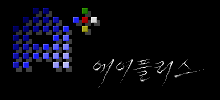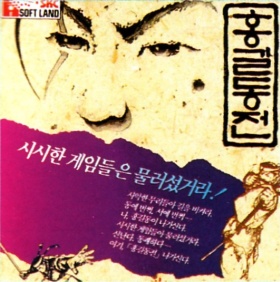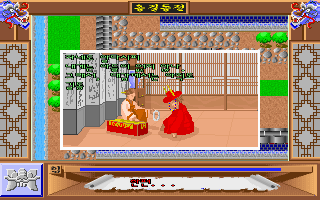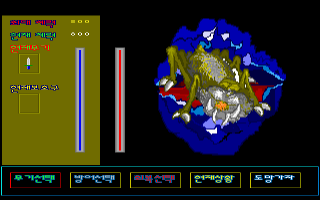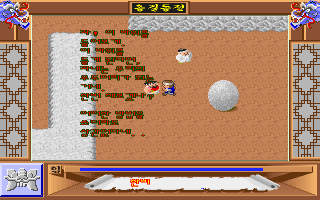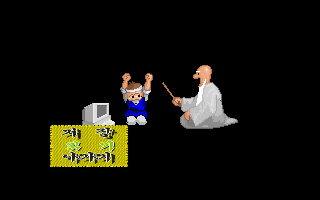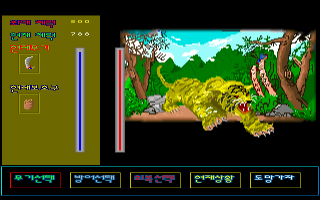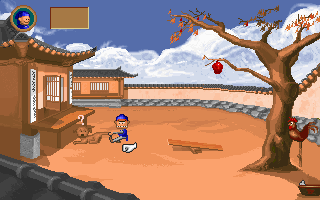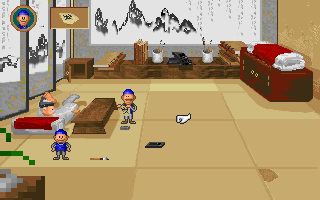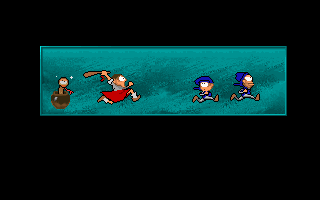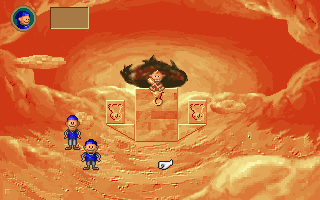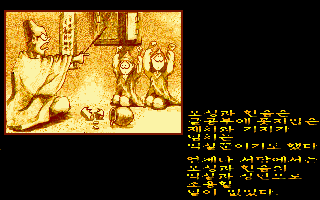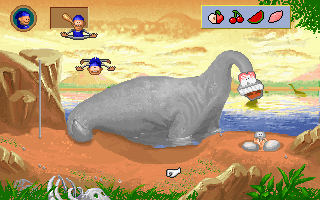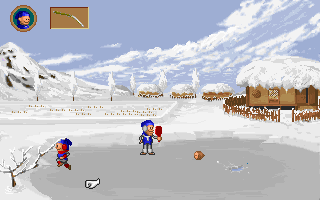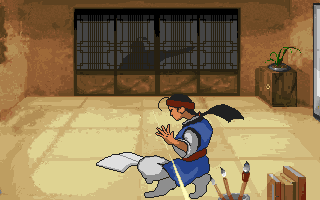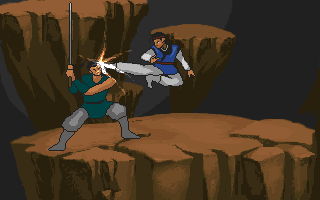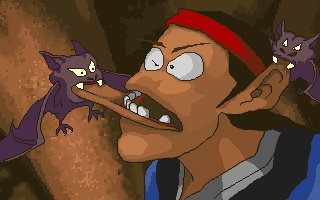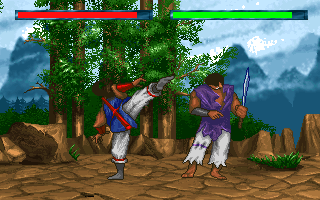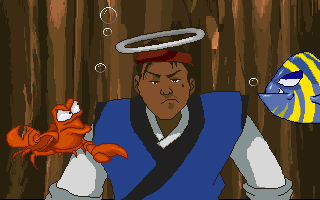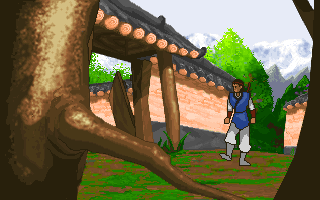A History of Korean Gaming
에이플러스 A+
|
Founded: |
unknown (around 1988) |
|
Status: |
defunct (last known activity 1996) |
|
Key People: |
權基台 권기태 Gwon Kitae: President |
|
Website: |
none |
A+ first appeared as an Apple computer software store in the late 1980s, but it seems the company never quite found its place in the industry. After "going astray" in multiple endeavours, as a contemporary magazine puts it1, the company became a game developer on its own. After that, A+ wasn't around for very long, but pioneered in a few (domestically) neglected genres, like point&click adventures and interactive movies. It is not certain when exactly A+ closed doors, but Gwon Gitae, representative of A+ and director on all the games, went on to localize foreign games for the Korean market at Korea Licensing, which was founded in 19962.
Games
홍길동전 (Hong Gildong-jeon) - IBM PC (July 10, 1993)
Advertisement
A+'s development debut was at times hailed as the first Korean RPG, during the temporal collective amnesia regarding the 80s home computer generation. In more recent times, this claim had to be corrected to "first Korean colored RPG for MS-DOS PCs", which sounds much less impressive. However, it can also be labeled as the first to follow the JRPG route a la Dragon Quest, because previous games all either stemmed from Western influences or were action RPGs.
As one of the many games based on the story of Hong Gildong and thanks to its screentexts kept completely in Han'geul (it even sacrificed the full VGA color palette for a higher resolution to make it more readable, though everything other than the text was just upscaled) in a time when even the wave of Taiwan-localizations had just started to catch some current, it caught a bit of attention. A+ sold 7,000 copies of the game3, which wasn't that bad for a Korean game in 1993, but even then most reviews weren't that favorable because of a number of flaws.
First and foremost stands the obfuscated design, that often leaves players not knowing what they are even expected to do. Then there's the overly simple and boring combat system, especially due to the lack of a party, which really limits the tactical depth. The rest is done by a fair share of bugs and glitches, as well as some more incomprehensible decisions like having an option to throw away items permanently while pretty much everything picked up except weapons and armor is quest-related.
오성과 한음 (Oseong-gwa Haneum) - IBM PC (December 20, 1993)
Advertisement
It is obvious from the first look that this game is heavily inspired by Coktel Vision's Gobliiins. Nonetheless, A+ kept with their theme of traditional Korean settings. Oseong and Haneum were two brothers, scholars of ancient times that were quite famous for a anecdotes about their childhood mischiefs.
The game starts out with their daily routines (stealing fruit from trees, doing their homework, catching snakes, etc.), but soon the two find themselves in a land of dreams, which gives the artists an excuse to put in several backgrounds that would be terribly out of place and time otherwise, like a dinosaur, a high-tech world, and so on.
Like the heroes in the French role model, Oseong and Haneum have to work together to solve the puzzles (Haneum joins in the third screen). However, here they use the same set of commands (walk, pick up, interact), and often it is not comprehensible why Oseong had to do this, but only Haneum could to that. Also, some items have to be placed at the exact location on screen to be usable, but more often than not there's no indicator whatsoever to reason this.
Because the twenty stages all work without a single word of text (only an introduction telling the background story of the two protagonists comes in text form), Oseong-gwa Haneum can be enjoyed by everyone without any language barrier. Only a few of the real-world puzzles may be harder without the cultural context (that most Koreans would probably lack nowadays, either). The question is, would one really want to take it upon oneself? While technically much more solid than their first game, it is still delivers an example of frustrating adventure design. Only the detailed artwork and lovely animations can at least partly compensate for the hardships.
홍길동전 2 (Hong Gildong-jeon 2) - IBM PC (August 1995)
A+'s last released game was an interactive cartoon in the vein of Dragon's Lair and Space Ace. No different from the Don Bluth games, the main game is little more a series of quick time events, where one has to press the enter and directional keys in time to avoid all the attack's to the hero's life. For the most part, it is not guessable at all which would be the right move in any given sitiation before seeing the evasive animation, so the only way to get through the 30 screens is trial & error and plenty of memorization. Luckily, it is OK to hold the button until the right moment, so the timing is not as difficult as it could have been. Still, some transitions remain unclear even after beating them numerous times. It is also not unusual to find oneself dying withing split seconds after a new screen loads, without even the time to grasp what is going on. The game also features some fighting game sequences with terrible controls (4 overall).
What was about the only appeal of the arcade laser disc games also helps Hong Gildong-jeon 2 to some degree. The artwork and animations are respectably pretty, at least given the fact that they're not FMVs, but all hand pixeled. The death scenes are staged funny enough to entertaine at least the first few times, more annoying is having to wait for Hong Gildong to blow away his halo afterwards. They also can't save the game from the terrible tedium of having to start over from the very beginning after three mistakes and going through all the scenes again and again, especially when stuck at a later stage. The music does a good job to play up the tension, but it has one big problem: The tunes are often just as long as the scene is supposed to take, and they're not reset immediately upon restarting, which leads to some awkward silence for a moment. The small number of tunes makes it also feel quite repetitive.
Unreleased Titles:
Korea Big Baseball (1995-1996)
References
1. Game Channel 8/1993, page 52
2. Korea Licensing company history (2001)
3. http://www.khgames.co.kr/week_01/main_content.htm?code=w_special&idx=978&mCode=813191101284107&sCode=4865781101284240
